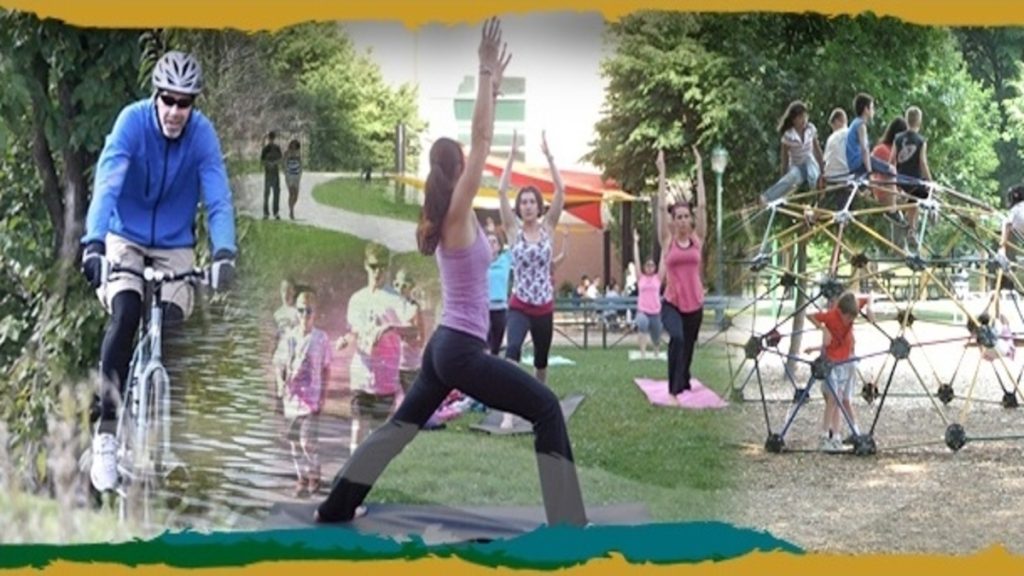Recreation defined
Recreation consists of activities or experiences carried on within leisure, usually chosen voluntarily by the participant – either because of satisfaction, pleasure or creative enrichment derived, or because he perceives certain personal or social values to be gained from them. It may, also be perceived as the process of participation, or as the emotional state derived from involvement.
Recreation refers to all those activities that people choose to do to refresh their bodies and minds and make their leisure time more interesting and enjoyable. Examples of recreation activities are walking, swimming, meditation, reading, playing games and dancing.
Leisure refers to the free time that people can spend away from their everyday responsibilities (e.g. work and domestic tasks) to rest, relax and enjoy life. It is during leisure time that people participate in recreation and sporting activities.
Sport refers to any type of organized physical activity, e.g. soccer, rugby, football, basketball and athletics.
Types of Recreational Activities
Breaking recreation down into various areas, classifications, or types might be done in numerous ways. The listing below represents one of the ways that recreation could be categorized for individuals, groups, or leaders planning programs. The listing is shown in random order and does not indicate any order of importance.
- Physical activities (sports, games, fitness, etc.)
- Social activities (parties, banquets, picnics, etc.)
- Camping and outdoor activities (day camps, resident camps, backpacking, float trips, etc.)
- Arts and crafts activities (painting, scrapbooking, ceramics, woodworking, etc.)
- Dramatic activities (plays, puppetry, skits, etc.)
- Musical activities (singing, bands, etc.)
- Cultural activities (art appreciation, music appreciation, panels, discussion groups, etc.)
- Service activities (fun in doing things for others)
Recreation also, of course, includes activities for all age groups (children, senior adults, etc.), as well as various special populations (physically handicapped, mentally retarded, etc.).
The Benefits of Participation in Recreational Activities
Participation in recreation and sports activities can have many benefits for both the individual and community.These include:
- Health promotion and disease prevention – recreation and sports activities are an enjoyable and effective way to improve health and well-being; they can relieve stress, increase fitness, improve physical and mental health, and prevent the development of chronic diseases, such as heart disease;
- Skills development – physical and social skills are some of the many skills that can be developed through participation in recreation and sports activities;
- Awareness raising, reduction of stigma and social inclusion – recreation and sports activities are a powerful, low-cost means to foster greater inclusion of people with disabilities; they bring people of all ages and abilities together for enjoyment, and provide people with disabilities the opportunity to demonstrate their strengths and abilities, and promote a positive image of disability;
- International peace and development – sport is a universal language that can be used as a powerful tool to promote peace, tolerance and understanding by bringing people together across boundaries, cultures and religions.
- Empowerment – recreation and sports activities can empower people with disabilities by positively influencing their self-confidence and self-esteem.
Recreational Institutions defined
Recreational institution can be defined as an organized system of social relationships for satisfying human desire of entertainment, amusement and play etc.
Recreational institution means an area of land containing sleeping accommodations and facilities used for both passive and active forms of recreation, which without limiting the generality of the foregoing, shall include, but shall not be limited to the following: children’s camp, religious camp, institutional camp, or other like or similar camp or establishment, but shall not include a tourist establishment.
Functions of Recreational Institutions
A. Physical Health:
Recreational activities, especially outdoor ones improve one’s health like maintaining lower body fat percentages, lowering blood and cholesterol levels, increasing muscular strength, flexibility, muscular endurance, body composition and cardiovascular endurance. Overall it increases one’s stamina and energy level resulting in more focus for academic activities besides also having an impact on one’s class attendance and attention thus leading to more learning. And as we all know “health is wealth”.
B. Mental Health:
Mental health is essential for overall physical health. Recreational activities help manage stress. It provides a chance to nurture oneself and provides a sense of balance and self-esteem, which can directly reduce anxiety and depression. There is also an increased motivation to learn as it can serve as a laboratory for application of contents learnt in classrooms teaching. It provides a channel for releasing tension and anxiety thus facilitating emotional stability and resilience. Such activities help students to become more self-reliant, emphatic and self-disciplined.
C. Improved Quality of Life:
People who make recreation a priority are more likely to feel satisfied with their lives overall, according to an American Recreation Coalition Study, 2000. Recreational activities help create a balance between academic pressures with physical and mental well-being. The effects of recreation are multifold. It enriches self-expression, self-fulfillment ability, interpersonal skills, techniques and methods of using leisure, physical strength, creative expression, and aesthetic sense. Such attributes have a favorable effect on human beings who have limits in everyday life. Therefore, recreation is allowed to be used as a tool of therapy (Lee, 2000). Physical activity-based recreation helps participants recover from the deteriorated physical strength, caused by the lack of exercise, and develops the latent ability to achieve self-realization. This also helps people to deal with common day to day problems more effectively as it makes people more optimists and with a positive outlook to life.
OTHER RELATED POSTS
